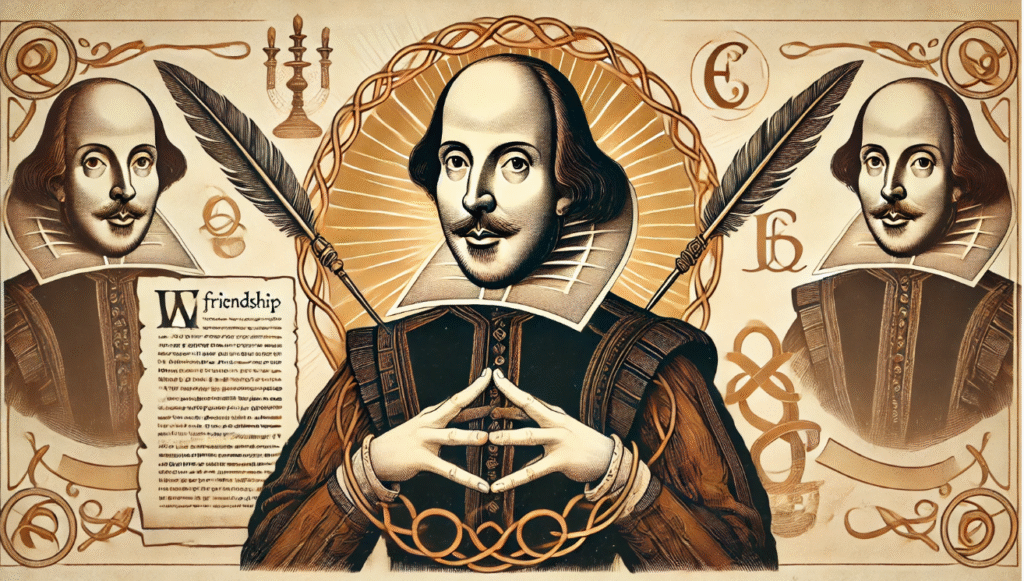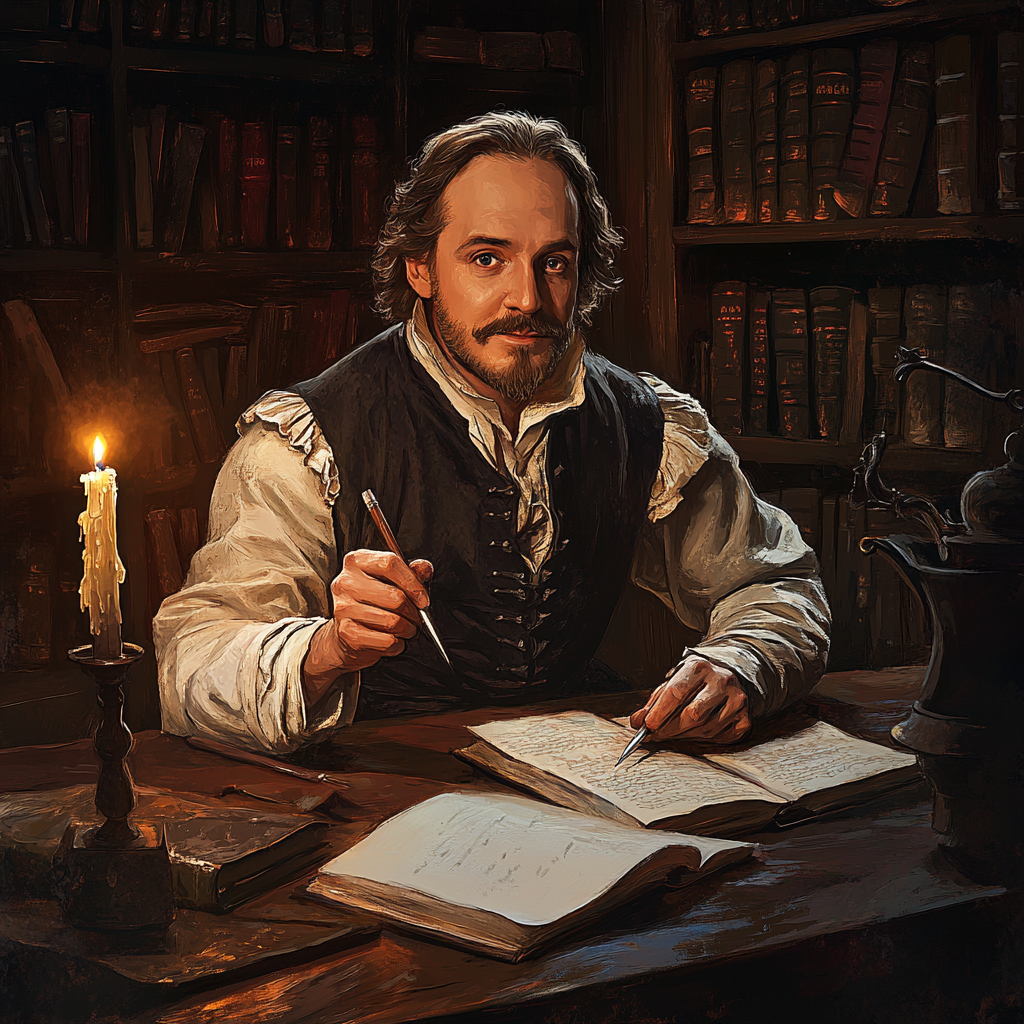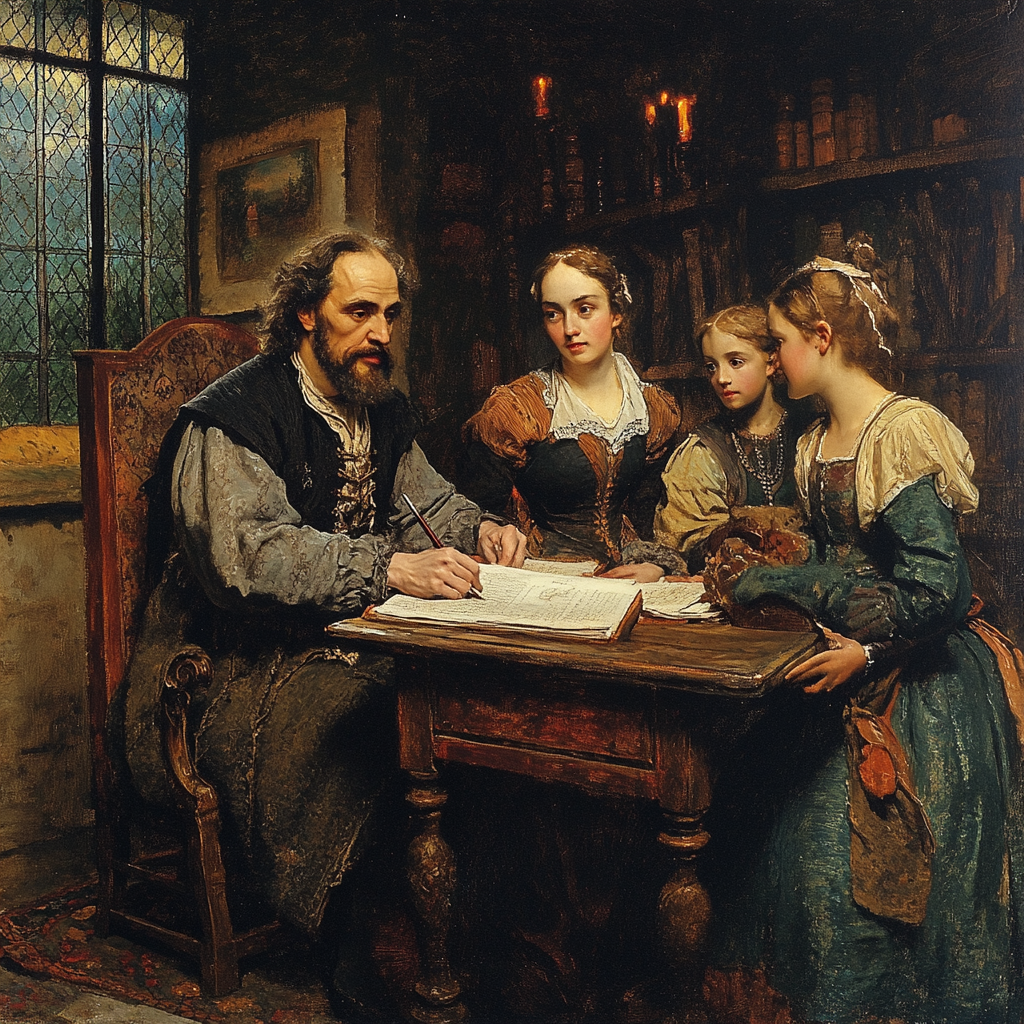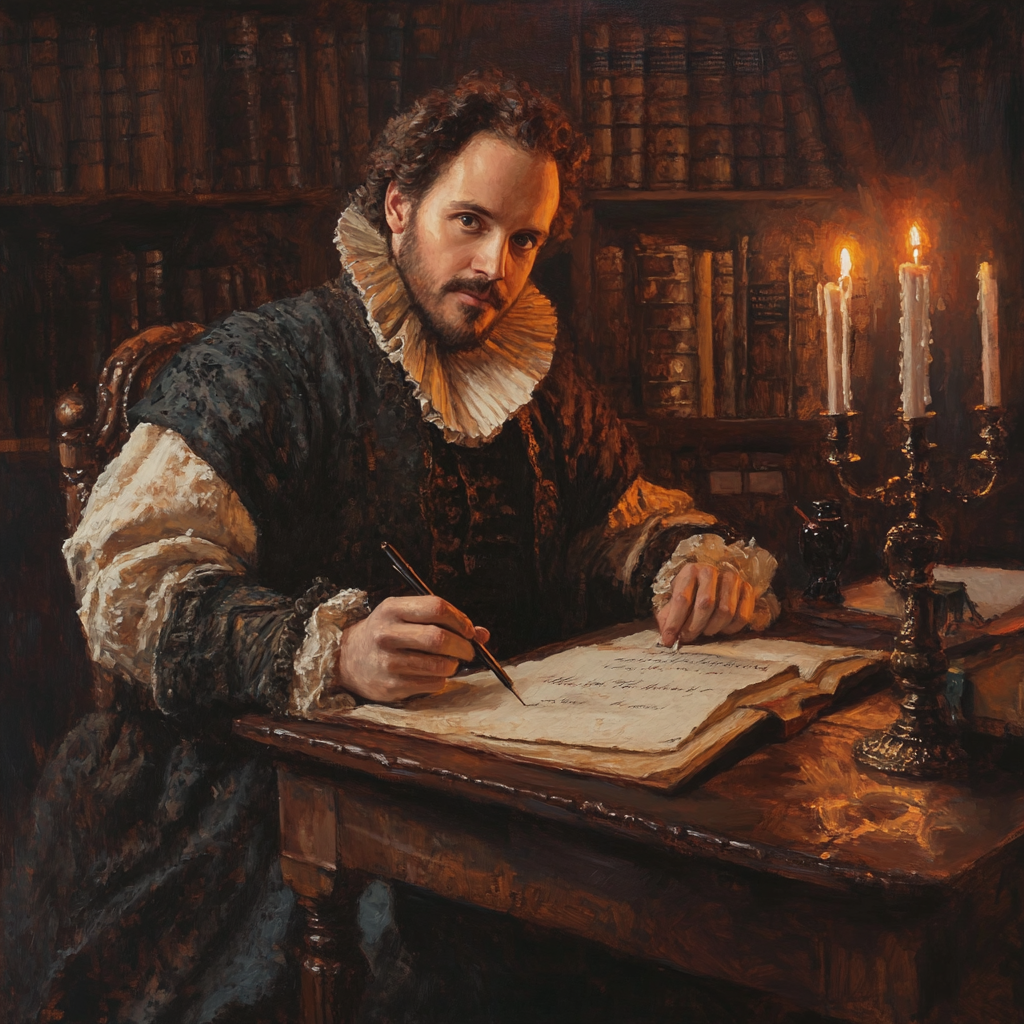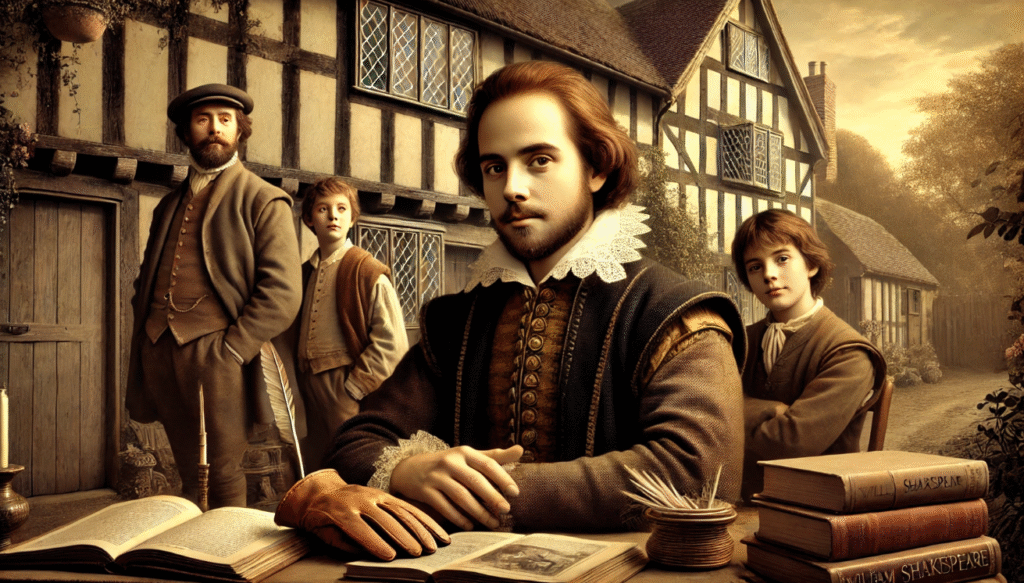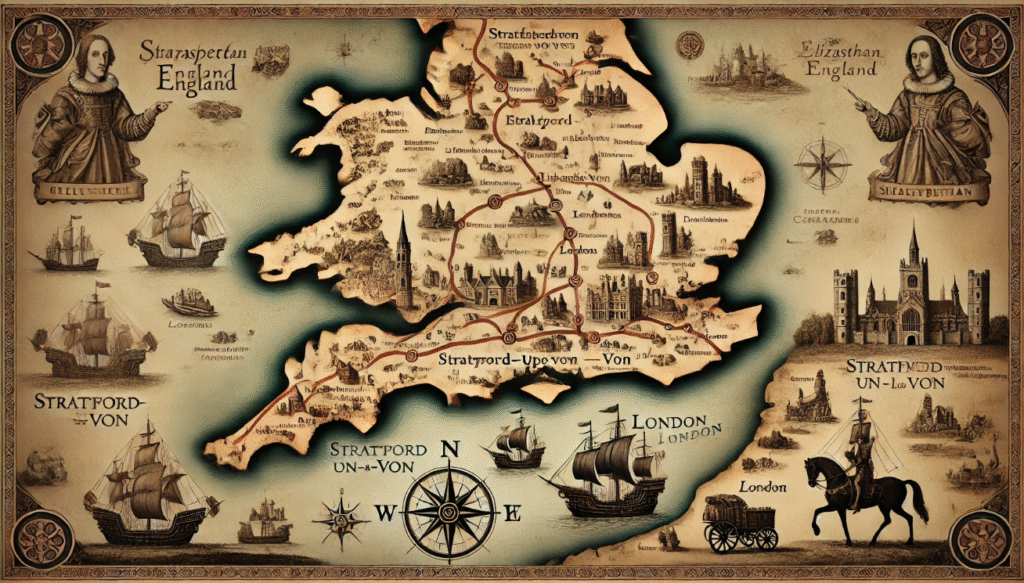“Shakespeare once said, about Shakespeare’s friendships ‘A friend is one that knows you as you are, understands where you have been, accepts what you have become, and still, gently allows you to grow.’ This quote reflects the deep understanding and support that Shakespeare valued in his friendships. His ability to capture the essence of human relationships in his writing continues to resonate with audiences today.
Shakespeare’s ability to create deeply human characters is often attributed to his keen understanding of the complexities of human emotions and relationships. One of the key factors that shaped his characters was his own friendships and personal experiences. By drawing on the nuances and dynamics of his own relationships, Shakespeare was able to imbue his characters with a sense of authenticity and depth that has resonated with audiences for centuries. From the passionate love of Romeo and Juliet to the tortured ambition of Macbeth, Shakespeare’s characters continue to captivate and move audiences with their relatable and enduring humanity.
Understanding Shakespeare’s Social Circle

Overview of Elizabethan and Jacobean Society
Social connections play a crucial role in artistic and theatrical circles as they can provide opportunities for collaboration, networking, and exposure. In the case of Shakespeare, his social connections with prominent figures such as the Earl of Southampton and the Lord Chamberlain’s Men (later known as the King’s Men) were instrumental in advancing his career and gaining support for his work. These connections allowed Shakespeare to showcase his talent, secure financial backing, and elevate his status within the artistic community. Additionally, social connections often lead to mentorship, inspiration, and the exchange of ideas, all of which are vital for artistic and theatrical development.
Key Relationships in Shakespeare’s Life
Richard Burbage was the leading actor of Shakespeare’s troupe, the Lord Chamberlain’s Men. He was known for his powerful and compelling performances in many of Shakespeare’s plays. Henry Wriothesley, Earl of Southampton, was a patron of Shakespeare and a possible muse for some of his sonnets. Ben Jonson was a fellow playwright and at times a rival of Shakespeare’s, but also a friend.
Shakespeare’s Stratford Connections
Early influences from family and friends in his hometown played a significant role in shaping his beliefs, values, and interests. Being surrounded by a supportive and nurturing environment allowed him to develop a strong sense of community and a deep connection to his roots. The guidance and wisdom imparted by his loved ones instilled in him a sense of responsibility and a drive to make a positive impact in his community. Their influence continues to be a source of strength and inspiration as he navigates through life’s journey.
Friendship as a Theme in Shakespeare’s Plays
Shakespeare’s works often delve into the complexities of friendship, showcasing the highs and lows, the betrayals and loyalties that come with it. From the deep bond between Hamlet and Horatio to the tumultuous friendship of Mercutio and Romeo, Shakespeare’s characters navigate the intricate dynamics of friendship, providing insight into human relationships and the power they hold. Whether through comedic or tragic circumstances, Shakespeare’s exploration of friendship offers a rich and nuanced portrayal of this fundamental aspect of human existence.

Examples of friendships in his plays:
In William Shakespeare’s plays, these pairs of characters share unique and complex relationships that contribute to the overall themes and dynamics of the stories. Hamlet and Horatio from “Hamlet” have a deep and loyal friendship, with Horatio serving as a confidant and sounding board for Hamlet’s thoughts and actions. Antonio and Bassanio from “The Merchant of Venice” have a close bond, with Antonio going to great lengths to help Bassanio achieve his romantic and financial goals. Rosalind and Celia from “As You Like It” are cousins who share a strong sisterly love and support for one another, navigating the challenges of love and identity together.
These depictions may reflect his personal experiences and observations by drawing inspiration from the world around him. Artists often use their own lives and surroundings as a source of inspiration for their work, so it’s likely that his personal experiences and observations have influenced the way he portrays the subjects in his art. This could include the people he has encountered, the places he has visited, and the emotions he has felt, all of which may be reflected in his artistic depictions.
Key Friendships That Influenced His Characters

Richard Burbage’s Influence
When considering the roles of Hamlet, Othello, and King Lear, it’s impossible not to think of the famous actor Richard Burbage. Burbage was known for his close collaboration with playwright William Shakespeare, and together they brought these iconic characters to life on the stage. Burbage’s portrayal of Hamlet showcased the character’s internal struggle and complexity, bringing a depth to the role that resonated with audiences. His performance in Othello captured the tragic downfall of the title character, highlighting the complexities of jealousy and betrayal. And in King Lear, Burbage’s portrayal of the aging monarch conveyed the emotional turmoil and turmoil of the character’s descent into madness.
Henry Wriothesley’s Inspiration
The dedications of Venus and Adonis and The Rape of lucrece are both written by William Shakespeare and are addressed to the Earl of Southampton. The connection to characters like Romeo or the Sonnets’ Fair Youth lies in the fact that the Earl of Southampton is often considered to be the “Fair Youth” to whom Shakespeare’s sonnets are addressed. Additionally, the themes of love, passion, and tragedy in these dedications resonate with the characters of Romeo and the Fair Youth, creating a sense of interconnectedness throughout Shakespeare’s works.
Ben Jonson: Rivalry and Mutual Respect
Shakespeare and Jonson shared a deep intellectual camaraderie, often engaging in friendly competition and mutual respect for each other’s work. This relationship undoubtedly had an influence on characters like Prospero in “The Tempest,” who reflect themes of rivalry and reconciliation that were central to both playwrights’ works. The complex dynamic between the two writers undoubtedly enriched the development of such characters and their underlying themes.
Reflections of Real-Life Bonds in Fictional Relationships
These case studies offer an insightful look into the possible real-life inspirations for some of Shakespeare’s most iconic characters. By examining the dynamics of loyalty, trust, friendship, and conflict, we can gain a deeper understanding of the relationships that may have influenced Shakespeare’s writing. Whether it’s the reflection of Shakespeare’s own friendships in Hamlet and Horatio, or the composite of personalities in Falstaff, these case studies provide a fascinating glimpse into the possible real-life inspirations behind these timeless characters.
The Impact of Shakespeare’s Friendships on His Legacy
The collaborative nature of Elizabethan theater was pivotal in shaping William Shakespeare’s career. His close friendships with fellow actors, writers, and theater producers influenced how he wrote about loyalty, trust, and betrayal in human relationships. The timelessness of his characters is partly rooted in the authenticity of their relationships, which continue to resonate with audiences today. Shakespeare’s ability to capture the complexities of human emotions and relationships was heavily influenced by the collaborative and supportive environment of the Elizabethan theater scene.
Friendship as a Timeless Theme
Shakespeare’s portrayals of friendship resonate with modern audiences because they explore universal themes such as loyalty, betrayal, and camaraderie that are still relevant today. For example, in plays like “Hamlet” and “Othello,” Shakespeare delves into the complexities of friendship and the impact of deceit and manipulation on these relationships. Contemporary readers and audiences often interpret these dynamics through the lens of their own experiences, finding parallels between Shakespeare’s characters and their own friendships. They may relate to the struggles of maintaining trust and honesty in their relationships, or the challenges of navigating conflicting loyalties.

Shakespeare’s friendships played a crucial role in shaping his works by adding depth and authenticity to his characters. His close relationships with other playwrights, poets, and actors provided him with valuable insights and perspectives that enriched his writing. These friendships allowed him to infuse his characters with real-life experiences and emotions, making them more relatable and compelling to audiences. Overall, Shakespeare’s friendships were instrumental in enhancing the authenticity and richness of his literary works.
William Shakespeare, known as “The Bard,” was a master at capturing the complexities of human relationships in his works. His ability to weave real-life relationships into his art continues to inspire and resonate with audiences today. Whether it’s the passionate romance of Romeo and Juliet or the intricate dynamics of family in King Lear, Shakespeare’s portrayal of human connection and conflict remains timeless. His understanding of the human experience is what makes his work enduring and relevant across generations.

